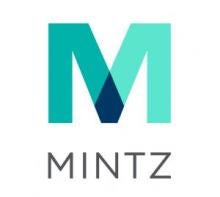The U.S. Department of Justice issued a memorandum to all Federal Agencies providing guidance clarifying the application of Federal discrimination law to DEI programs and offering best practices for program compliance. The memorandum, Guidance for Recipients of Federal Funding Regarding Unlawful Discrimination (the “Guidance”), ostensibly focused on entities receiving federal funding, fleshes out what the Trump Administration meant when it referred to “illegal DEI” in a series of Executive Orders issued earlier this year, and is far more expansive than the guidance the EEOC/DOJ jointly issued back in March. While the DOJ confirmed that the Guidance is non-binding (e.g. the best practices it offers are not mandatory), employers, whether they do business with the federal government or not, should pay very close attention to its overall message. We summarize the guidance below.
1. The first part of the Guidance identifies a non-exhaustive list of potentially unlawful discriminatory actions that could result in the revocation of federal funding, including:
- Engaging in preferential treatment – this occurs when one group is provided benefits in a way that “disadvantages” others (except in certain very narrow circumstances).
Cited Examples:
- Race-based or race-exclusive scholarships, programs or other opportunities such as internships, mentorship programs, or leadership initiatives “that reserve spots for specific racial groups, regardless of intent to promote diversity.”
- Prioritization of candidates from “‘underrepresented groups” for admission, hiring, or promotion while “bypassing” qualified candidates.
- Resources or facilities such as “safe spaces” or lounges exclusively for members of a specific racial or ethnic group.
- Prioritization of candidates from “‘underrepresented groups” for admission, hiring, or promotion while “bypassing” qualified candidates.
- Engaging in “proxy” discrimination – that is, attempting to disguise discriminatory actions by utilizing facially neutral criteria as a substitute for protected characteristics with the intent to advantage or disadvantage individuals based on such protected characteristics.
Cited Examples:
- Using “cultural competence” selection criteria as a proxy for prioritization of people based on racial or ethnic background. Although this occurs more in the university application process, it can occur when employers create internships, fellowships or scholarship programs by asking applicants to demonstrate “lived experiences,” to share “obstacles they have overcome,” or to identify “cross-cultural skills” in ways that “effectively evaluate candidates' racial or ethnic backgrounds rather than objective qualifications.”
- Engaging in “geographic or institutional targeting” by implementing recruiting strategies that focus on “specific geographic areas, institutions, or organizations chosen primarily because of their racial or ethnic composition rather than other legitimate factors.”
- Soliciting “overcoming obstacles” narratives or “diversity statements” from candidates in a way that “advantages those who discuss experiences intrinsically tied to protected characteristics, using the narrative as a proxy for advantaging that protected characteristic in providing benefits.”
- Segregating individuals based on protected characteristics – here, the focus is on prohibiting segregation under the guise of promoting inclusion or remedying past inequities. But the Guidance is also careful to note potential exceptions such as permitting segregation for intimate spaces designated for women only, like bathrooms (which aligns with other DEI Executive Orders (discussed here)); or where Federal law “expressly permits race-based remedies for specific, documented acts of past discrimination by the institution itself or in specialized contexts . . . .”
Cited Examples:
- Separating employees during training sessions (e.g. having Black employees only break out for discussion) or precluding a group of employees from participating in a training.
- Creating or defining resources or facilities for one group even if technically available to all or intended to be a “safe space” because “identity-focused” resources or facilities could create a perception of segregation and foster a hostile environment.
- Limiting programming to certain participants (e.g. offering DEI-focused programs only to participants who identify with a protected class or mandating protected class eligibility for selection in a program).
- Creating or defining resources or facilities for one group even if technically available to all or intended to be a “safe space” because “identity-focused” resources or facilities could create a perception of segregation and foster a hostile environment.
- Using protected characteristics as the basis for selection criteria – employers cannot mandate or implicitly prioritize specific groups. Notably, this extends not only to hiring and promotions, but also to selection of vendors or program participation.
Cited Examples:
- Requiring a minimum number or percentage of candidates from certain protected groups when interviewing.
- Providing contracting preferences to minority-owned businesses or using a business’s minority status as a tiebreaker.
- Mandating a certain number or percentage of program participants, scholarship recipients, fellowship recipients, or leadership initiative participants to be from a diverse background (e.g. 50% of program participants are women) “even if framed at addressing underrepresentation.”
- Utilizing training programs that promotion discrimination or a hostile work environment – the Guidance is focused on eliminating such programs that “through their content, structure, or implementation—stereotype, exclude or disadvantage individuals based on protected characteristics or create a hostile work environment.”
Cited Examples: Using presentations, videos or other training materials that may single out, demean or stereotype, including using phrases such as “white privilege” or “toxic masculinity” in a DEI training.
2. The Guidance also identifies recommended “Best Practices” to comply with federal antidiscrimination laws and “minimize the risk of violations.”
Some of these recommendations echo previous suggestions from employment practitioners, including: (i) ensuring inclusive access to workplace programs, activities and resources, (ii) documenting rationales for hiring programs, including based on specific, measurable skills and qualifications, that can be shown as unrelated to protected characteristics; (iii) avoiding diversity quotas; (iv) ensuring that training programs are sufficiently inclusive and content appropriate; and (v) having strong anti-retaliation policies and procedures. The Guidance includes other recommended best practices such as:
- Prohibiting “demographic-driven criteria” – such as targeting “underserved geographic areas” or “first generation students” if “they are chosen to increase participation by specific racial or sex-based groups.”
- Scrutinizing neutral criteria for “proxy effects” – for example, if targeting “low-income students,” ensuring the program is applied uniformly without targeting areas or populations to achieve certain race or sex-based outcomes.
-
Ensuring downstream third parties comply with antidiscrimination measures – such as requiring explicit non-discrimination clauses in contracts and monitoring third parties, such as vendors or subcontractors, for ongoing compliance.
3. Additional Considerations For Employers
From a practical standpoint, the Guidance creates some new areas of potential concern for employers, federal contractors, and federal fund recipients, such as:
- Notwithstanding the language of the Supreme Court’s Harvard Admissions decision that appeared to support inquiries into different human experiential backgrounds, the Guidance’s focus on “proxy discrimination” cautions employers to think carefully before deploying this type of selection criteria (e.g. “disadvantaged backgrounds” or “socioeconomic status”), whether applied in the college application or hiring processes, as part of workplace scholarship programs or even when considering workplace promotions. It remains to be seen how this apparent tension between the Guidance and legal precedent will be settled, but in the meantime, employers should carefully craft this criteria to ensure it is not viewed as a workaround for selections based on a protected class.
- The Guidance warns federal grantees (and, likely, federal contractors) to ensure that any federal funding they distribute to third parties does not further any of the practices the Guidance deems discriminatory. To this point, the Guidance suggests that Federal grantees should review third parties’ practices for ongoing compliance and even include nondiscrimination clauses in contracts that require third parties to comply with federal law, specify that federal funds cannot be used for discriminatory programs, and terminate contracts if they do. Employers should consider whether and how they will: (1) revisit existing, and negotiate new, contracts to ensure their own DEI certifications are accurate, and (2) tackle the associated additional diligence of third party policy, practices and procedures (including, as the Guidance suggests, by “reviewing program materials, participant feedback, and outcomes” of their contracting relationships).
- Readers familiar with the “Rooney Rule” and those who have made intentional efforts to seek talent in other parts of the country or at a greater number of academic institutions should consider the Guidance’s impact on those goals. Employers will need to discern how they pursue talent while taking care to avoid claims of proxy discrimination, especially in light of varying interpretations of an employer’s decision to expand its recruiting sources.
- Notably absent from mention in the Guidance is any reference to the False Claims Act liability that can come from making false certifications regarding a federal contractor’s or federal grantee’s compliance with federal antidiscrimination mandates (which we discussed here). Federal agencies could look at the Guidance for examples of practices that would constitute violations of those certification requirements.
Although the Guidance raises many new questions, it is clear that DEI in the workplace will continue to be a constantly evolving topic. Mintz’s Employment Practice will have more to come on this most recent development. But for now, the Guidance highlights for employers the importance of: (1) auditing their DEI policies and practices to understand the scope of the policies/programs their organization maintains, how they are implemented, and whether they continue to remain legally compliant; and (2) being deliberate and strategic about their actions, particularly given the drastic changes to date.






 />i
/>i

